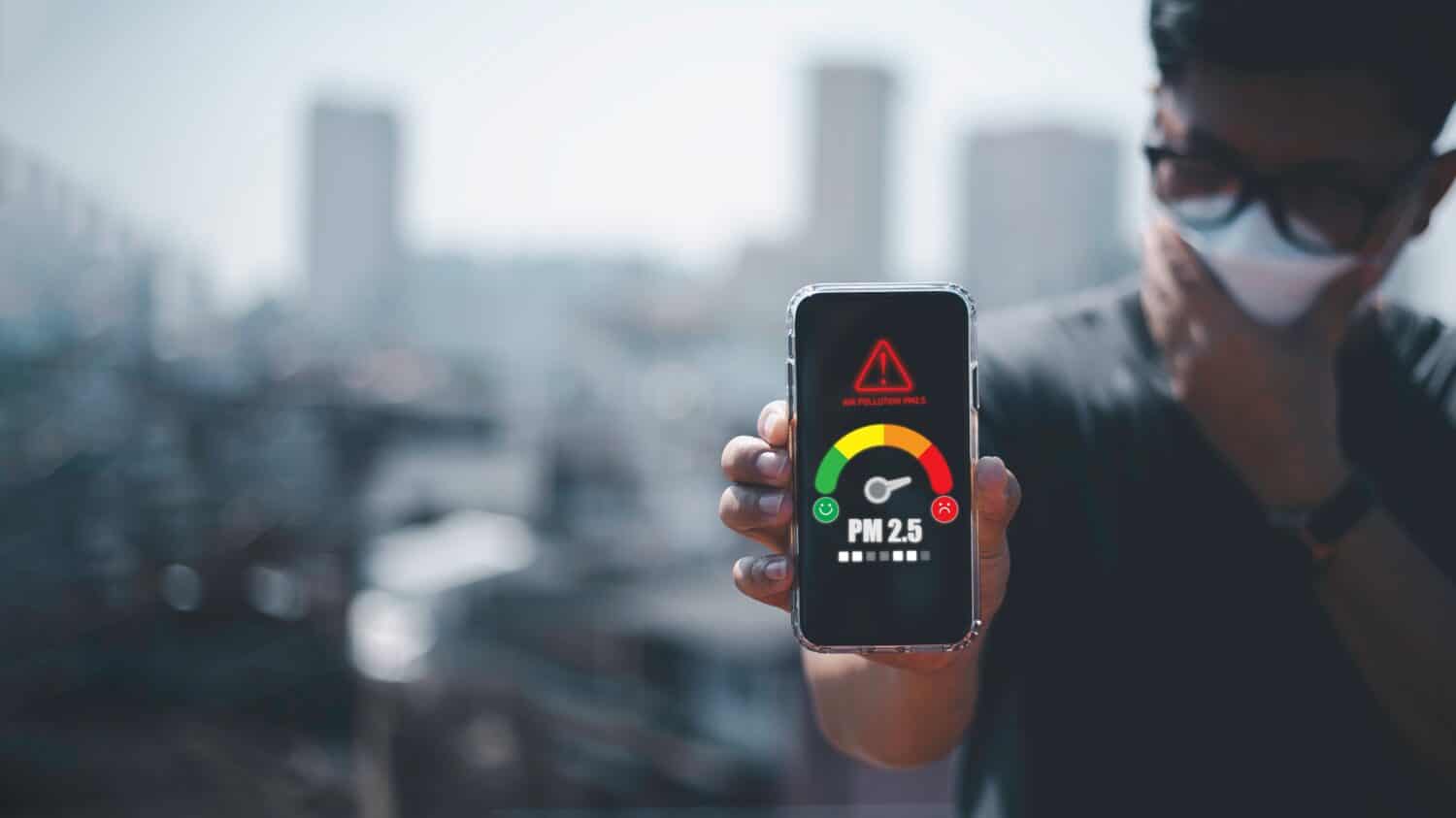Clean air is an essential need for a healthy human life. Yet, an overwhelming majority of the world’s population lacks access to clean air. Every year, around 1.4 million preventable deaths occur in Europe and Central Asia from polluted environments. Just to help you gauge the staggering impact of air pollution better, in 2019, Think Global Health found that the death toll from air pollution surpassed the number of deaths linked to alcohol use, malaria, and even road traffic collisions.
To tackle the air pollution crisis, institutions such as the World Health Organization (WHO), the United Nations Environment Programme (UNEP), and partners are trying to actively monitor air pollutants from both human activities like vehicle emissions as well as natural events like dust storms. Using advanced sensors, satellite imaging, and real-time pollution calculators these institutions are continuously working towards empowering governments and communities with the tools they need to understand, respond to, and mitigate the impacts of air pollution around the world. The Air Quality Index (AQI) is the tool used to communicate the quality of air in a specific location. The AQI operates on a scale from 0 to 500. The cleanest air is represented by the lowest number on this scale. Generally, an AQI surpassing 100 is considered unhealthy.
Thanks to the availability and use of these various monitoring tools, the most polluted countries in the world receive significant attention today. In Asia specifically, nations grappling with severe air quality issues often come into focus as efforts intensify to address emissions and tackle the problem of air pollution. Nevertheless, it is equally important to acknowledge countries that are proactively working to combat pollution as well. In this article, we aim to spotlight some of the Asian countries that stand out for having the cleanest air.
Asian Countries that Have Exceptionally Clean Air
Statista conducted a survey assessing the air quality of 28 Asian countries and regional economies. Based on the survey, here are the five Asian countries/regions with the cleanest air quality. Let’s find out what these countries do to limit harmful air pollutants.
5. Hong Kong
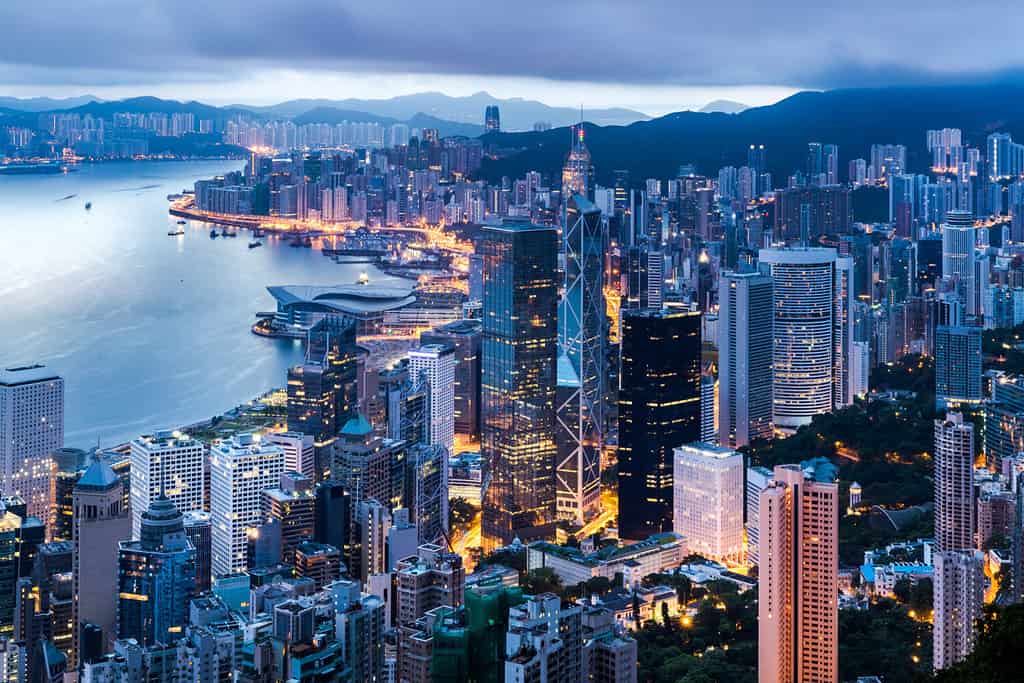
Despite facing challenges like vehicle emissions and industrial activities, air pollution levels in Hong Kong are currently assessed as moderate.
©EarnestTse/Shutterstock.com
The average concentration of PM2.5 in Hong Kong was 15.4 µg/m³ in the year 2020. Air pollution in Hong Kong is mainly caused by motor vehicles, power plants, and marine vessels. Two of the biggest challenges that this Special Administrative Region (SAR) of the People’s Republic of China (PRC) has been facing are regional smog and local street-level pollution. The region is, however, actively committed to addressing these issues.
In June 2021, the Government introduced the ‘Clean Air Plan for Hong Kong 2035’. This plan outlines long-term goals and strategies to achieve air quality comparable to major international cities by 2035. The Hongkong Government is also actively working to promote the adoption of electric vehicles to reduce street-level pollution. To enhance regional air quality, Hong Kong collaborates with the Guangdong Provincial Government in implementing various measures and establishing joint 5-year emission reduction targets.
Hong Kong has already achieved substantial improvements in air quality through a comprehensive vehicle emission control program. In 2020, the levels of nitrogen dioxide, sulfur dioxide, respirable suspended particulates, and fine suspended particulates, along roadsides had decreased by 40%, 50%, 48%, and 47%, respectively, in comparison to the levels recorded in 2010.
4. Taiwan
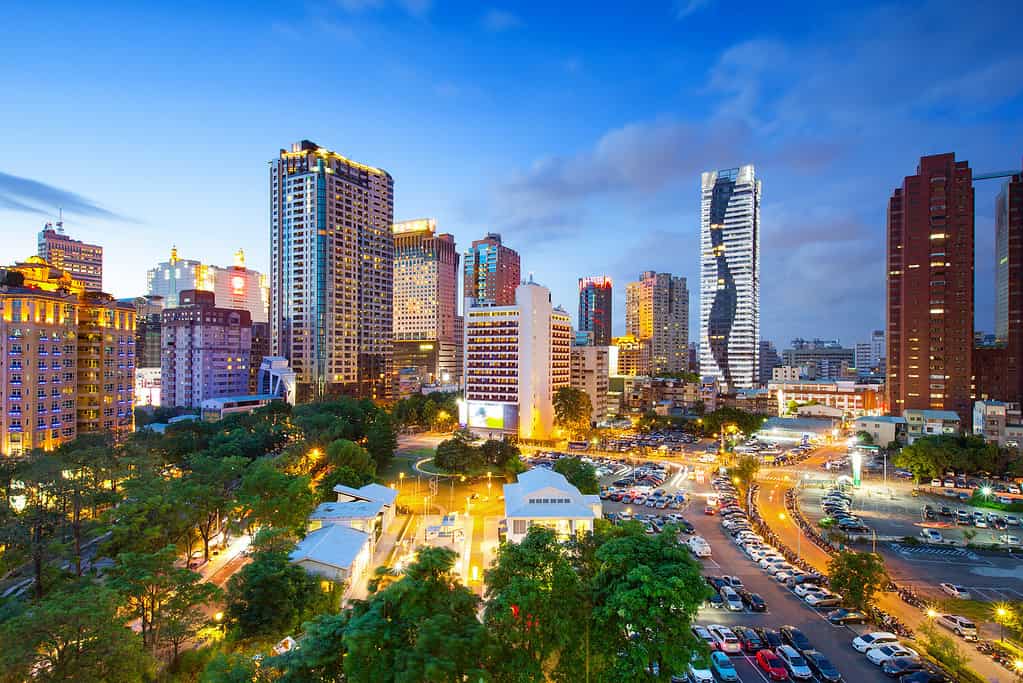
Taiwan’s proactive measures and comprehensive strategies in addressing air pollution contribute to its status as one of the countries with the cleanest air in Asia.
©Sean3810/iStock via Getty Images
According to Statista, the average PM2.5 concentration in Taiwan was 15 µg/m³ in the year 2020. Improving air quality and addressing air pollution have always been a top priority for the country. In Taiwan, 40% of the average annual concentrations of PM2.5 reportedly come from international sources. This emphasizes the transboundary nature of air quality challenges. The remaining 60% of PM2.5, on the other hand, originates within the country.
In response to these challenges, the Taiwanese government has implemented various comprehensive measures. The air pollution control strategy and air pollution control action plan introduced in 2017 are two significant milestones in addressing the air pollution problem. Additionally, substantial amendments to the Air Pollution Control Act in 2018 have further helped strengthen the regulatory framework.
More recently, Taiwan launched a new air pollution control plan for the years 2020-2023. This plan was launched to address pollution at all stages, right from its point of origin to end-of-the-pipe technologies. The plan is the biggest testament to Taiwan’s commitment to comprehensive air quality management. It has helped the country achieve its goal of an annual average PM2.5 concentration of 15 μg/m3 or less by 2023. It has also helped reduce emissions of volatile organic compounds to alleviate ground-level ozone pollution.
3. Philippines
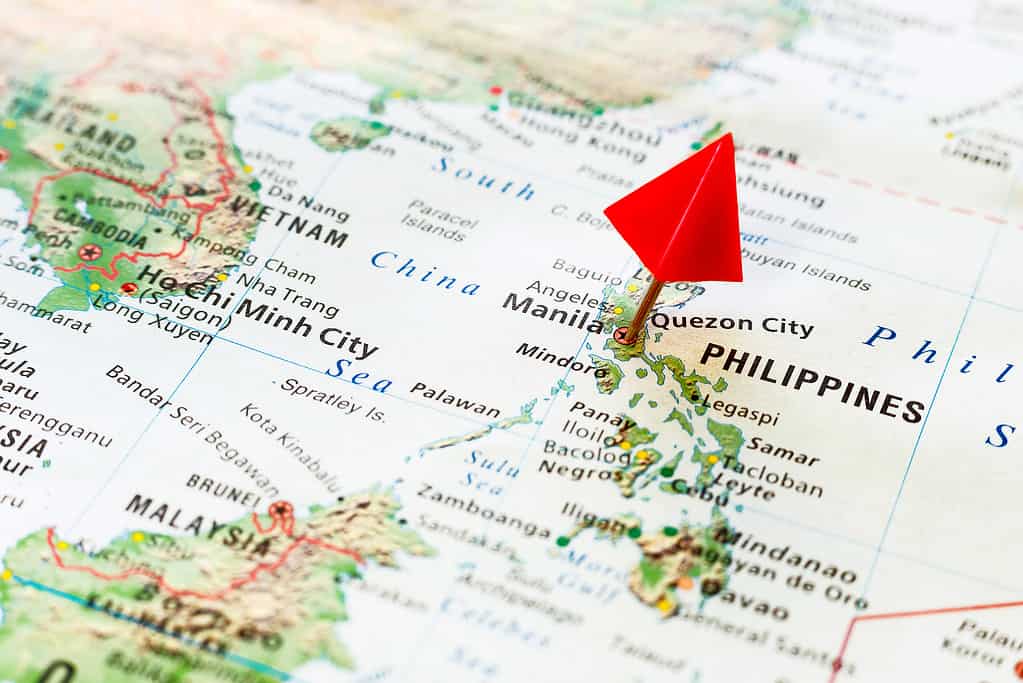
Despite its ranking, air pollution is a big challenge in the Philippines, particularly in areas like Metro Manila.
©Konstantin Aksenov/iStock via Getty Images
With an average PM2.5 concentration of 12.8 µg/m³ in 2020, the Philippines ranks third among the countries with the cleanest air in Asia. The country has had a national program for air pollution and management called the ‘Philippine Clean Air Act’ since the year 1999. In 2015, the country also joined the ‘Climate and Clean Air Coalition. The Philippines is actively working to address the challenge of air pollution as well as climate change-related natural hazards. Despite the ongoing efforts, the Philippines still has a long way to go. The country’s average PM2.5 concentration surpasses the World Health Organization’s recommended maximum level of 5 µg/m³. Advocacy groups such as the Center for Research on Energy and Clean Air (CREA) and Greenpeace Philippines are urging the government to intensify actions in addressing this issue.
2. Singapore

The air quality in Singapore is much better in comparison to most Asian cities and is almost on par with cities in the United States and Europe.
©leungchopan/ via Getty Images
Singapore is a country that underscores that good air quality is a non-negotiable necessity. Clean air is n not only imperative for safeguarding public health but also for the environment. The country has stringent measures in place to ensure that its air quality is not compromised. A network of air monitoring sensors has been placed across the entire island to consistently monitor its ambient air quality. Together with air quality monitoring, strict enforcement programs, and other legislation, the country also ensures that it regularly meets the prescribed air emission standards. The country’s Pollutant Standards Index (PSI) has consistently stayed within the ‘Good’ to ‘Moderate’ range in the year 2022.
1. Japan
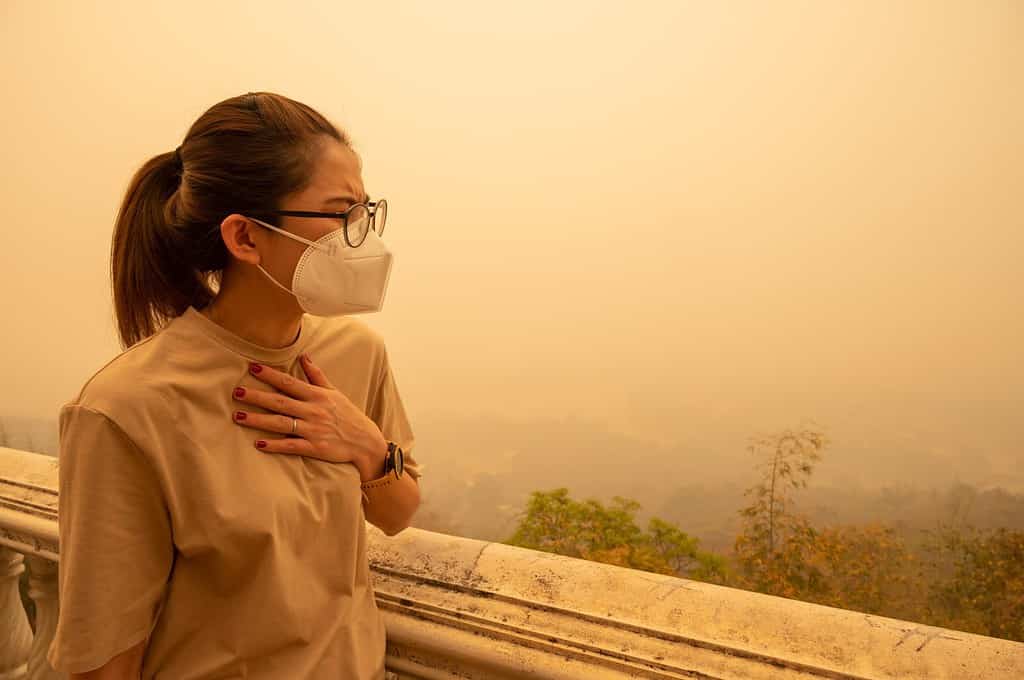
Japan, the country with the cleanest air in Asia fosters a collective responsibility for maintaining air quality and a sustainable environment.
©Boyloso/Shutterstock.com
Japan’s journey in tackling pollution began in 1970 when it adopted the so-called ‘Pollution Diet‘. Since then, the country’s efforts in tackling pollution have been steadfast. The country encourages businesses to embrace environmentally friendly policies and technologies. Additionally, Japan prioritizes the modernization of older and inefficient power stations and factories to enhance environmental sustainability. Recognizing the crucial role of education, Japan also maintains a commitment to educating both business and public communities in combating pollution. In 2020, the average PM2.5 concentration in Japan was 9.8 µg/m³.
Thank you for reading! Have some feedback for us? Contact the AZ Animals editorial team.

